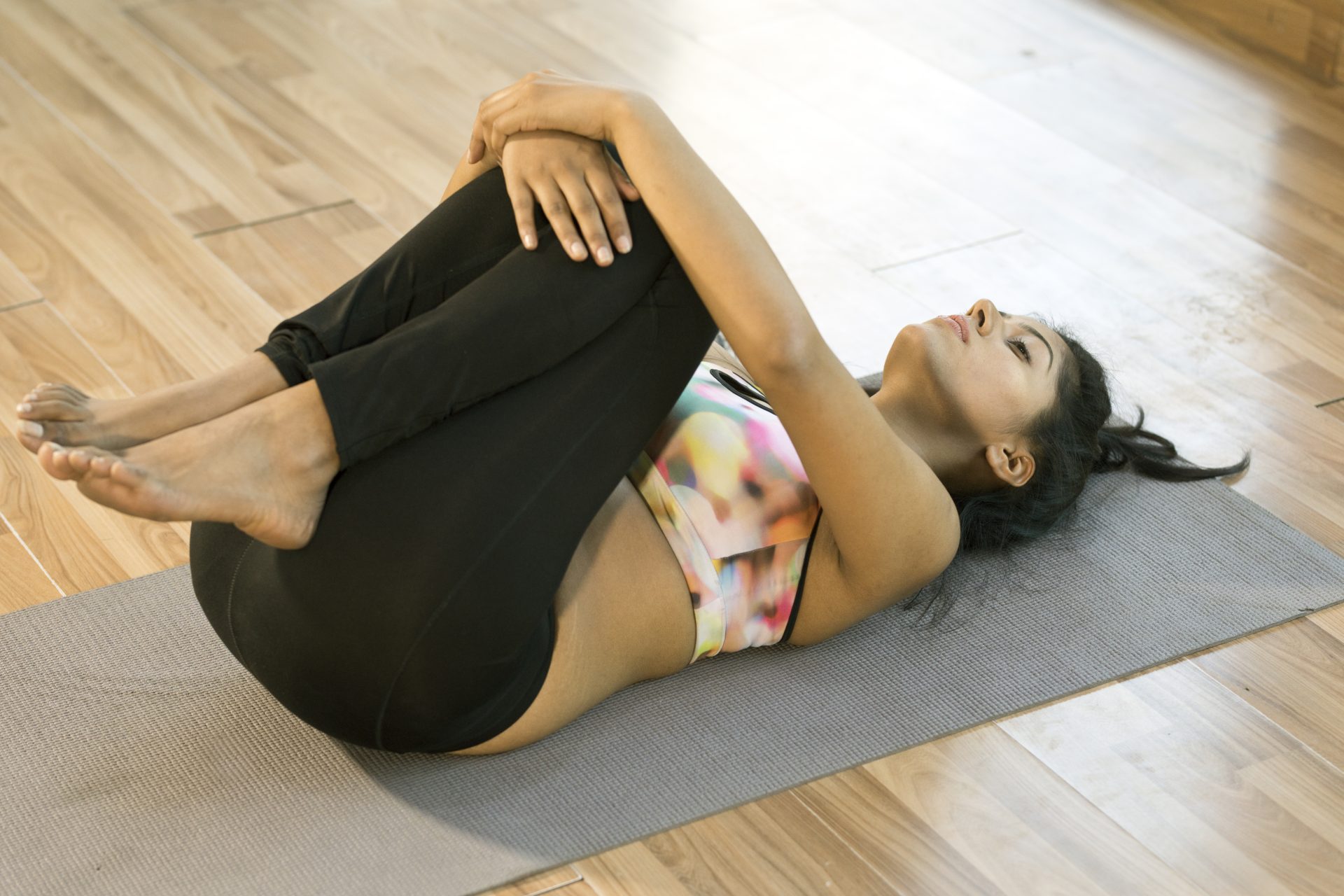It might look like all you’re doing is having a cheeky snooze, but ‘corpse pose’ requires more focus than other parts of your yoga practice. Here’s how to get the most out of it.
Savasana, or ‘corpse pose’, is the final rest at the end of every yoga session. It’s the bit we all look forward to, especially if you’ve had a hard day and just need a few minutes of shut-eye.
If you manage to stay awake, however, this pose can often be quite mentally challenging. It’s when you’re lying down in the dark that you’re often confronted by the things you struggle with in day-to-day life – whether that’s a never-ending to-do list, existential dread over bills and climate change, or general restlessness.
Never has this been more true than now. Staying positive during difficult times and circumstances beyond our control is hard and this is where we can really reap the benefits of savasana. Sure, it’s a pose defined by calm and peace, but it’s one that helps us release stress. Get it right and you’ll find that it brings everything into perspective – refilling your cup before you head back into the world.
You may also like
Get the most of our your yoga practice in 2022 by spending more time in the savasana resting pose
But what if you’ve never experienced that positive vibe from savasana before? Here are three expert-backed tips for making the most of the pose for those few, fleeting minutes.
1. Concentrate on relaxing every single muscle
The first hurdle to enjoying savasana is simply being able to stay still for a minute or two. When was the last time you sat or lay down without thinking about the laundry, falling asleep or needing to fidget?
“Our world is speeding up and it reflects in today’s faster yoga sessions,” yoga instructor Jalaja Ramanunni tells Stylist. “As we practise asanas, there is a tendency to push the muscles to their limits. Savasana is a way for the body to relax and re-energise itself after an asana practice. During this pose, we relax every muscle and release any tension stored in our body. Practising savasana regularly conditions us to release stress.”
The aim is to move thoughts away from everyday stresses and instead focus the mind on relaxing each of your muscles in turn.
Ramanunni firmly believes that if your mind is overworked, your body gets affected – which is why mental stress can have physical ramifications. “Most of us have forgotten how to relax. Savasana can help our body and mind come out of a constant fight-or-flight mode, slow down mental chatter and reduce anxiety.
“Keeping the mind still isn’t easy; it’s no wonder that people find it easier to get into challenging asanas than stay in savasana,” she adds.
2. Instead of trying to think of nothing, repeat gratitude mantras
Aysha Bell, a fourth-generation energy healer and yogi who specialises in transformational healing, ends all her yoga sessions with a gratitude meditation and incorporates a mantra of inhaling and exhaling love and gratefulness.
“The greatest experiences within what I teach (yoga, keeping fit, meditation and other mindfulness practices) is just simple gratitude. My meditations are always about releasing what no longer serves us. Then we are able to settle into this place of detachment. I close most of my classes with meditation – it’s a combination of the words and affirmations that I resonate with.
Think about being thankful for every little thing around you:
- Your next breath
- Your home
- Your life
- Your friends
- Your children
- Your family
- The time you have to practise yoga
“Doing that leaves less space for negative thoughts and feelings. When we are in a state of gratitude, we are open to receiving more of what we want to bring into our lives,” she says.
3. Give yourself a bloody great hug
Mariel Witmond, yoga teacher and founder of mindful movement platform Mindful Sonder, teaches her students to embrace gratitude with a physical self-body hug during savasana. The idea is that they then are better able to take the mindset of abundance out with them as they leave. She calls this her “gratitude hug”.
“Though my classes in general tend to be quite dynamic, it’s what we learn as we slow down that I find most valuable,” she explains. “When we transition from the more energetic part of our practice to the more restorative, having shaken everything out of the body, we become better equipped to deal with, and more aware to notice, the things that bubble up to the surface.”
Savasana, she says, is where we can “process the learnings of our class so we can take those lessons with us when we step off our mat, which is where our practice truly begins”.
If you’re worried about getting up and hugging yourself when everyone else is lying flat, remember that it’s your yoga practice. You can do whatever makes sense in the moment, so long as you don’t interrupt other people; if you want to leave the session full of self-love, then bring your knees to your chest and hug it out.
The next time you’re in savasana pose and feel your mind wandering, try to bring your thoughts back to feeling grateful – whether that’s by chanting mantras to yourself, hugging your knees or feeling the warmth of the floor as you lie as still as possible. It might just be one of the best tools we have for staying positive, even when the going gets tough.
Images: Getty
Source: Read Full Article
